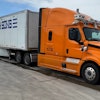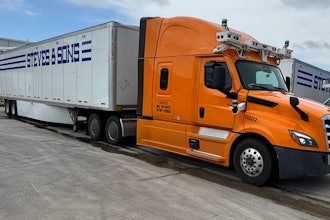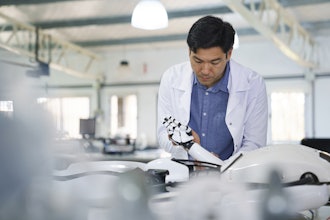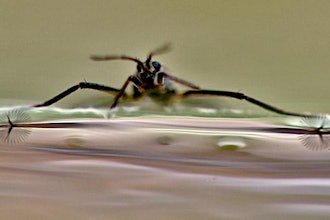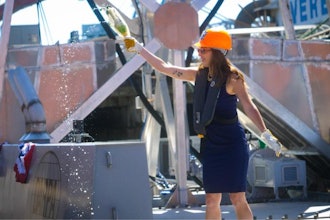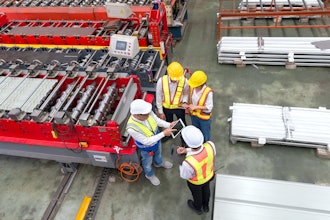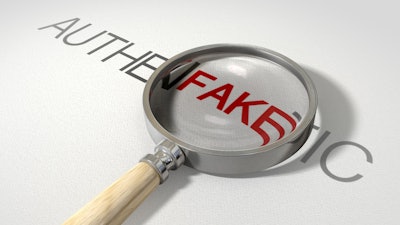
The Irish playwright Oscar Wilde once stated that “imitation is the sincerest form of flattery that mediocrity can pay to greatness.” While this might be true, there is no doubt that imitation in the form of counterfeits is a major concern for the manufacturing sector. These misrepresentations are becoming increasingly common in segments of industrial supply, including peripheral parts used in manufacturing applications.
For instance, counterfeiters sometimes re-label the wattage of a motor to suggest it is of a higher performance standard than it actually is. As a result, the faulty motor could cause leakages and short circuits, which would eventually lead to motor failure. Usually, this is due to the end user not guaranteeing that the part has been tested or validated to the same regulations as a legitimately manufactured version — which isn’t a new phenomenon in the manufacturing industry.
The battle to protect original designs and other inventions in manufacturing started in 1883, with the signing of the Paris Convention for the Protection of Industrial Property. Though subjected to substantial revisions over the years — the last amendment dates back to 1979 — the Convention is still in force today. The treaty protects industrial property in the widest sense and aims to repress unfair competition by enforcing the recognition of patents, trademarks, industrial designs, service marks, trade names, and geographical indications.
Originally signed by eleven countries, the Convention now includes 177 contracting parties. It is the first and largest international agreement of its kind, ensuring that industry-related intellectual work is protected in all contracting countries.
Despite the numerous laws that protect intellectual property in the industry, counterfeiting is still widespread, so there are several organizations to investigate the illegal reproduction and resale of fake products.
The International Anti-Counterfeiting Coalition (IACC), formed in 1979, is the longest-standing institution of its kind, active both in the U.S. and internationally. The IACC is composed of a cross-section of industry representatives from all sectors and its membership includes law firms and government agencies with a specific background in IP rights. It offers regular conferences, training and expert advice to its members on how to protect their intellectual property, such as the design of automation parts.
In the 1990s, the surge in popularity of consumer electronics spurred counterfeiters to plague the market even further. To protect the electronics industry, the Electronic Reseller Association International (ERAI) was created. The ERAI is committed to monitor and investigate issues affecting the global electronics supply chain. In 2007, the organization expanded to cover all sectors of the supply chain, including OEMs, contract manufacturers (CMs), government agencies and testing laboratories.
A Problem of the Past
And even now, the issue of counterfeiting remains. Manufacturers face unplanned downtime in manufacturing and the headache of ensuring that all replacements are legitimate only exasperates this timeframe.
In fact, new data from the ERAI suggests the number of counterfeit electronic products in circulation is increasing and industrial businesses lose approximately $250 billion each year as a result. Discovering a part is counterfeit causes financial problems, and insurance claims will be void if the component in question is not covered by an OEM guarantee. If this is the case, and a free replacement is off the cards, this creates an entirely new task of sourcing and purchasing the part from a legitimate provider.
So, how can manufacturers establish whether they are operating unknowingly with counterfeit equipment?
The first step would be to conduct an equipment audit of every part on site. But this is not always a feasible option. Plants usually operate with a variety of equipment, some of which is up to 20 years old, and therefore finding out where the part was sourced could be almost impossible.
Instead, manufacturers should focus on the equipment that could be inadequate. For instance, a conveyor with regular performance problems may indicate that the part was produced by a counterfeiter. However, it is important to remember this might not be the case for every faulty piece of equipment on site.
The best way to avoid counterfeit parts is to not purchase them in the first place. The most effective way to protect your business from counterfeits is to buy from reliable suppliers that have strict control over their whole supply chain, like EU Automation. A reliable parts supplier has first-hand experience of the disruption caused by a broken-down part and the sense of panic to replace it as quickly as possible.
Imitation is certainly not the sincerest form of flattery in the manufacturing sector. For decades, counterfeits have long troubled manufacturers and their finances, but this could be counteracted. By forming a good relationship with a reliable parts supplier and conducting equipment audits, counterfeits will be something of the past.
Claudia Jarrett is the U.S. manager for automation parts supplier EU Automation


